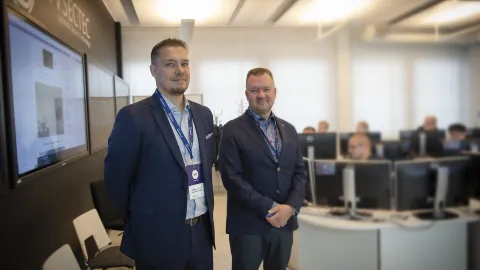Finland participated in the international compilation of scorecards for children's and young people's physical activity, which was published in Abu Dhabi at the International Society for Physical Activity and Health Congress. This is the fourth time that the physical activity summaries of children and young people from different countries were compiled and compared between countries. In 2022, a total of 57 countries or regions participated in the international compilation of scorecards.
In an international comparison, Finland ranks among the top four countries together with Japan, Slovenia and Denmark, taking into account the average results of all ten different areas of the participating countries.
"Finland's results have attracted positive attention, and Finland is seen as one of the model countries for promoting the physical activity of children and young people," says Tuija Tammelin, Principle Researcher at Jamk University of Applied Sciences.
Of the countries that have done well in the evaluation, Denmark receives good evaluations in terms of participation in organised physical activity and sport. The good results of active travel are highlighted in the summary of Japan. Slovenia's strengths, on the other hand, stand out as the results of the physical condition of children and adolescents, as well as the overall activity, which is partly explained by the fact that physical education is taught at school on a daily basis. Finland's strengths stand out as overall activity, active travel on school trips and well-coordinated measures at the national level.
One of the goals of the international Scorecard work is to share solutions and practices to promote the physical activity of children and young people. The challenges are largely similar in different countries, although the solutions are partly culturally linked.
Finland's measures are of interest
International cooperation also aims at harmonising the criteria. Data collections in different countries currently differ from each other, and scorecards are also about self-assessment, which should be taken into account when comparing between different countries. For example, in the results of the Finnish Scorecard and the international compilation, the implementation of the mobility recommendation has been interpreted slightly differently: in Finland with a stricter criterion and in the new international compilation more loosely.
In international compilation, the criteria focus only on examining the physical activity of school-age children. However, in the Finnish Scorecard, the results of physical activity behaviour are presented more extensively in four age groups: under school age, primary school age, middle school age and students.
"Children and young people as a whole are a fairly broad age group, and different ages require a different approach to promoting physical activity as well. In Finland, the physical activity of children and young people is promoted as part of the 'On the move' entity, which has its own national physical activity promotion programmes for early childhood education and care, school-age children and students. This has aroused a lot of interest around the world," says Tammelin.
The Finnish Scorecard also examines the results of children and young people with disabilities in an inclusive and broader manner than before. Nearly one-fifth of children and young people have a disability that makes their daily lives more difficult, and according to surveys, they move less than others. At the international meeting, experts from different countries now gathered to consider solutions to promote the physical activity of all children and young people based on the results of the Scorecards.
Read more:
- Children's and young people's physical activity Scorecard 2022 publication (PDF)
- Comparison of results from different countries (PDF)
- Children and Adolescent Physical Education 57 Country Scorecards Summary global matrix 4.0
- International research article on a summary of scorecards from different countries




